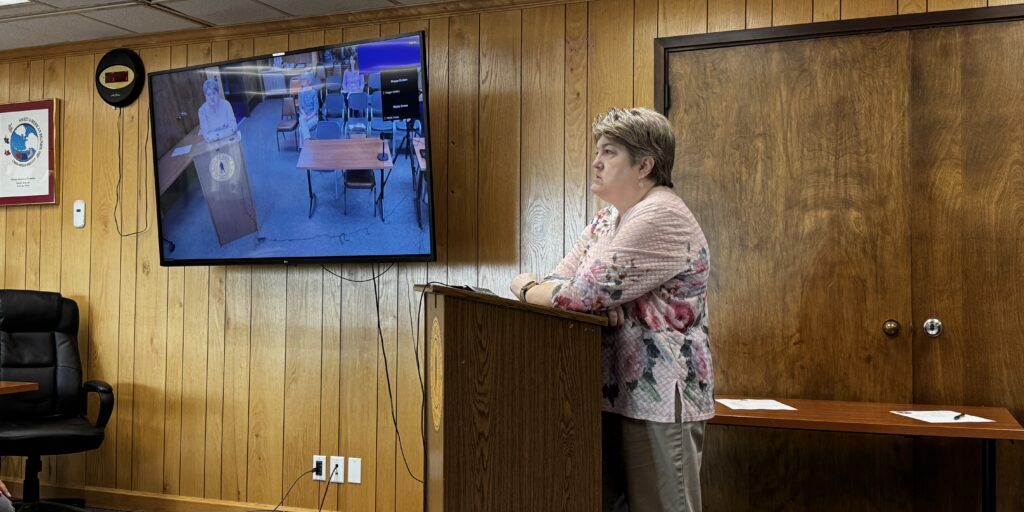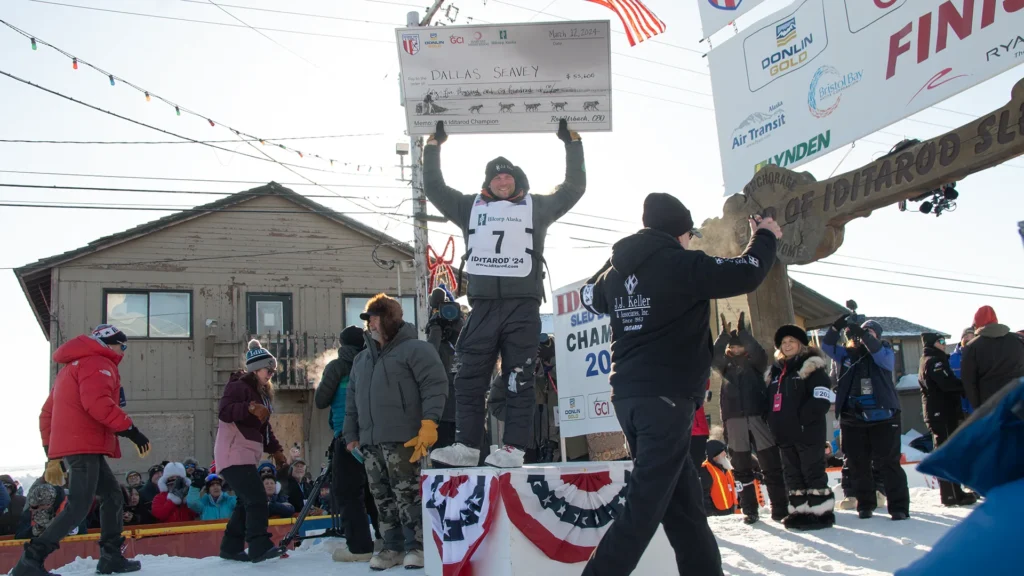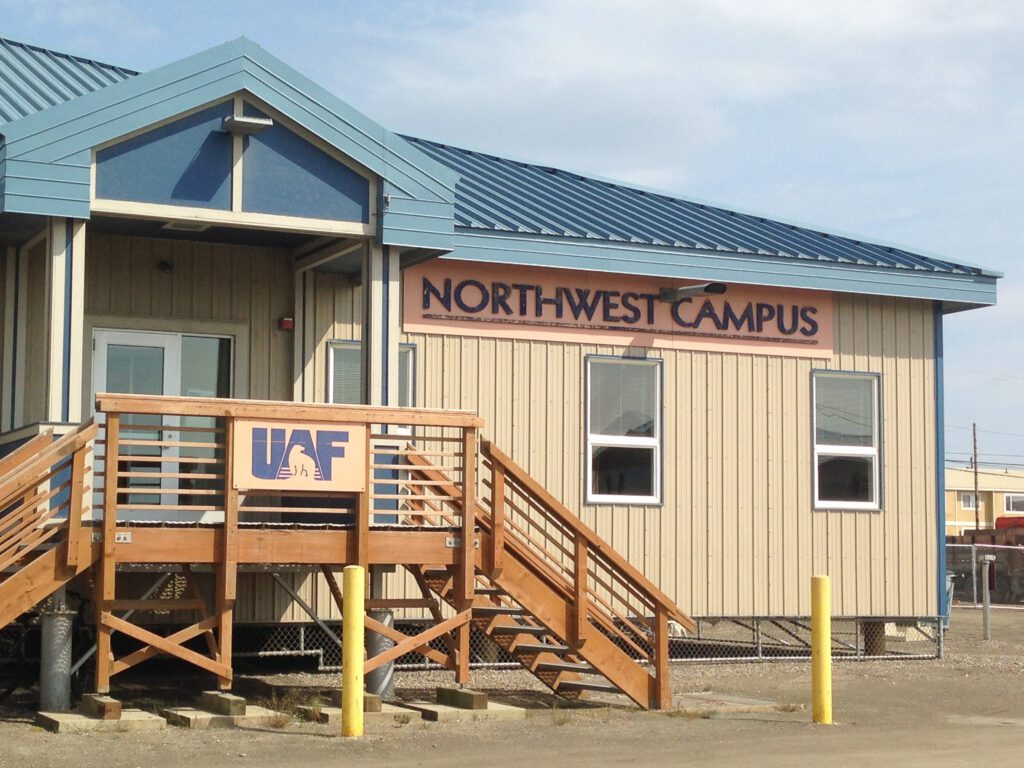Iditarod teams have left the Yukon River and reached the Bering Sea coast. As KNOM’s Ben Matheson reports, mushers are shedding equipment, dropping slow dogs, and looking to make a move in the final 300 miles of the Iditarod.
Willow musher Wade Marrs was the first to reach Unalakleet, winning a bag of Bering Sea gold nuggets worth $3,500 as part of the Wells Fargo Gold Coast Award. But it was two-time champion Mitch Seavey who left first, breezing through the checkpoint in the bright Sunday afternoon. After posting some of the fastest run times among the leaders, Seavey said in Kaltag he’s focused on keeping his team moving at a fast clip for the final third of the race:
“Whatever we do will be to keep the speed in the dogs. I don’t want to slow down; it takes too long and is too boring. I don’t want to slow down. Maybe right at the end. Keep resting them, keep taking care of them. We need to be clever because the guys behind me haven’t given up.”
After arriving, Seavey has swapped out his large sled for a smaller, more nimble one to head toward the coast. He has systematically rotated out dogs from the gangline to rest in the sled, but now, that technique is over.
A dozen sleds bearing freight tags were lined up in Unalakleet, awaiting mushers looking to pick up speed. Racing in the front, Seavey will work his way north, seeking to hold off four mushers who are all decades his junior.
“I guess I’m little bit anxious, because I’m in a position where I can win this thing if something doesn’t go wrong. My son Dallas is extremely tough and extremely competitive. He’s already talking to me like, ‘oh, you’ve got this sewn up.’ I think he’s playing poker. I don’t think he believes that. He won’t quit; he won’t give up. So, it will be a race. I think I have better speed and a better position, but that can change.”
After completing the portage trail over from Kaltag, Dallas Seavey arrived in Unalakleet Sunday afternoon and rested just shy of four hours before leaving in pursuit of his father. He says he’s resisting the temptation to chase down his dad.
“We’re going to run these guys; we’re going to keep running our race. I’m not saying we’re tapping out. The simple math says chasing him doesn’t help anybody; chasing him makes us vulnerable to mushers behind us, and all of that is really irrelevant. I’m going to get these guys down the trail as fast as possible. If we end up closer to him at the finish line, I guess we gained on him.”
The younger Seavey says he expects the gap to widen between him and his dad, but he’s not throwing in the towel.
“[In] 2014, I thought I finished in third. You never give up, you keep plugging away. If my dad gets lost and is in the middle of nowhere for 2 hours, I don’t want to say ‘what if I had pushed harder, would I have been able to snatch that spot?’”

Beginning with the Fairbanks start on the Chena River, the 2017 Iditarod trail has been dominated by river miles. That changes now, as the course takes teams over sea ice and exposed, treeless expanses. Unalakleet checkpoint boss and Iditarod veteran Middy Johnson says coastal dog mushing is all about the wind.
“The biggest thing is the wind: you can face it between here and Shaktoolik, Shaktoolik on, you can face it at Safety, at Topkok. It’s brought teams to a halt before.”
2011 champion John Baker lives in Kotzebue and has built a team in those conditions.
“Any type of weather comes at any minute.”
And for the mushers chasing Mitch Seavey, any opening is welcome, but it needs to come soon if they’re to reel in the two-time champion on the trail to Nome.







